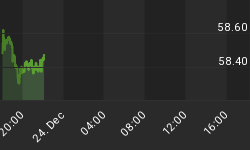Dear Subscribers,
I hope all of you are enjoying a relaxing Memorial Day Weekend, and have found a moment to remember those who have fallen to defend the U.S. and democracy around the world. While there are folks out there who could always find faults with the current state of the world (and there are many things wrong with it), there is no doubt that we are now living in the most prosperous, tolerant, and technologically-advanced times in world history. The bears would like to cite the amount of leverage on U.S. households' balance sheets - but this does not take into account the fact that an asset-to-debt ratio of over five is still financially sound, especially given the increased financial knowledge of the U.S. population over the last two decades and the amount of financial management tools we have at our disposal. Heck, this author is carrying a credit card balance of several thousand dollars himself - all at a 0% interest rate. For the first time in history, U.S. households (short of doing an IPO) can manage their balance sheets just like the U.S. corporations of 20 years ago. Moreover, much of the leverage over the last few years had occurred in the residential sector - with much of the debt being carried at historically low interest rates. The following chart showing the annualized consumer credit growth (total, as well as revolving and non-revolving) supports this, as consumer credit growth has been on a secular decline since the mid 1990s and is now at its lowest level since the end of the last consumer-driven recession in 1991 to 1992:

Looking at the above chart, there are two possible and logical implications:
-
There is no doubt that the U.S. housing bubble is in the midst of popping - but unlike the technology bubble in spring of 2000, this process will more resemble a slow leak from a car-tire than a sudden crash in housing prices. This makes sense, as housing turnover (even at the margin) is less so than the turnover of common stocks (many folks who bought a house at higher prices may just stay with it as opposed to selling it, as everyone needs a place to live), and as the housing sector is very illiquid. First of all, please note that total consumer credit outstanding does not include debt backed by real estate, such as mortgages or home equity loans. Moreover, the total consumer credit outstanding as of March 2006 is $2.14 trillion. Assuming that housing continues to be weak going into 2007, consumers may very well be able to cushion against most of this blow by borrowing from more traditional sources (e.g. Goldman Sachs has previously projected a 0.7% to 1% hit in GDP due to a housing slowdown in 2006 - but should consumer credit growth increase by 5% this year (over $100 billion), this will be enough to offset the slowdown in housing).
-
Readers who have a good memory should note that the U.S. stock market had already bottomed nearly two years before the last significant trough in consumer credit growth in July 1992 (in October 1990, as a matter of fact). This means that the above chart is more of a tool to tell you what has happened instead of telling you what will happen - particularly when it comes to individual stock investments. Once in awhile, even this author has to be reminded of the fact that the stock market is the ultimate leading indicator! This lesson can be perfectly illustrated by looking at the daily closing price of WMT during that time period:

As I mentioned on the above chart, the stock price of WMT actually bottomed in October 1990 - nearly two years before the trough of consumer credit growth in July 1992! Folks who did not buy WMT or other retailers during the bottom in October 1990 simply because of declining consumer credit growth missed out on a great run. Interestingly, the same retail investor who bought WMT right at the bottom of consumer credit growth in July 1992 saw the stock price of WMT rise from $12 to nearly $16 over the next nine months - but $16 would mark a significant top WMT for the next four years. The price of WMT would not reach $16 a share again until July 1997.
So Henry, what are you now saying? Are you saying that WMT may actually be a buy here?
No, I am not saying this at all. At the end of the day, everyone will need to make his or her own decisions as an investor, but the above example is a lesson that "nothing is obvious" - and that any slowdown in housing may just prove to be relatively shallow as a revamped growth in consumer spending (not to mention corporate capital spending) take up the slack. Moreover, many of the U.S. mega-caps have been severely oversold and are undervalued relative to their valuations over the last 10 to 12 years - assuming that the bond market holds up over the next few years (even though I believe long bond yields have bottomed, I don't believe they will skyrocket from current levels). It is no coincidence that virtually all the recommendations of the Motley Fool's "Inside Value" publication have been the U.S. mega caps. Let's once again take a look at the most recent chart of WMT:
More follows for subscribers...















